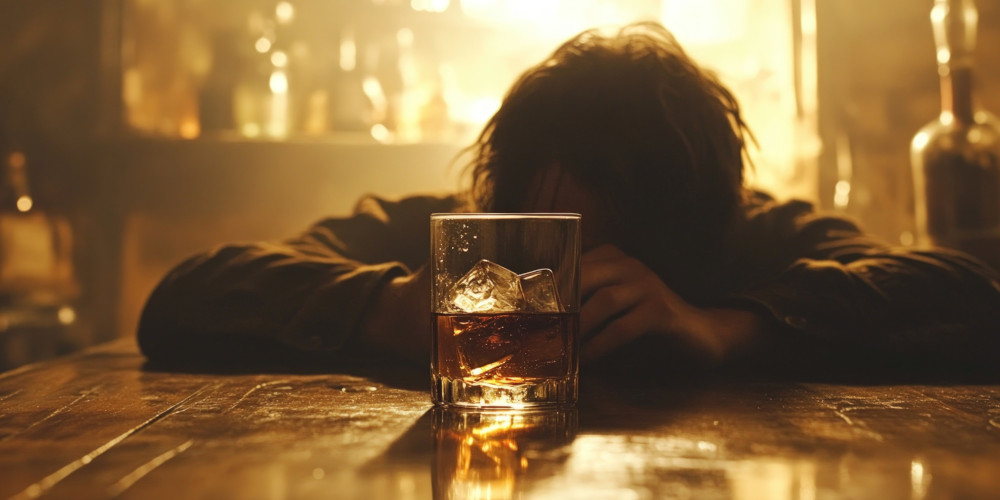It is no secret that it is a tough battle to break an addiction to drugs or alcohol, but the real reasons behind this difficulty are not well understood by most people. These include physical changes to the brain, having to learn an overwhelming amount of new life skills and coping strategies, being faced with unavoidable triggers and struggling to overcome powerful feelings of guilt and shame.
1. The brain
One of the primary reasons that addiction is so difficult to break is due to changes in the brain that occur as a result of repeated substance abuse. Chronic drug or alcohol use rewires the brain’s reward centre, leading to a strong emotional and physical dependence on the substance. The brain also becomes less sensitive to natural rewards, making it more difficult to find pleasure in activities that used to bring joy, such as hobbies or spending time with loved ones. Additionally, the brain learns to associate the substance with pleasure, leading to intense cravings and compulsive use.
It can take anywhere from several months to several years of abstinence for the brain of an addicted person to heal to the point where it starts to resemble a brain of a non-addict. The brain may never recover from some of the damage, but the good news is that the brain is a resilient organ that can change in positive ways in response to healthy habits.
2. Triggers
Triggers are specific stimuli that can activate a craving for drugs or alcohol, making it difficult for people to break an addiction. Triggers can be environmental, emotional, or physical and can vary from person to person. Understanding and identifying triggers is an important step in the recovery process and can help individuals develop coping strategies to manage their cravings.
Examples of environmental triggers include being in a place where the substance was previously used, such as a bar or a party, or being around people who use drugs or drink alcohol. Emotional triggers can include stress, anxiety, depression, or other negative emotions that may lead an individual to seek relief through substance abuse. Physical triggers can include certain sights, smells, or sensations that are associated with substance use, such as seeing an old drug dealer or smelling the aroma of alcohol or marijuana.
While some triggers can be avoided, many cannot. Individuals have to learn coping strategies to deal with triggers in order to safeguard their recovery.

3. Other mental health problems
Mental health disorders, such as depression, anxiety and PTSD can also make it difficult to break an addiction. Substance abuse is often used as a form of self-medication, providing temporary relief from emotional distress and mental turmoil.
Without addressing underlying mental health issues, it can be challenging to break the cycle of substance abuse. Additionally, mental health disorders can exacerbate the symptoms of addiction, leading to a vicious cycle of substance abuse and poor mental health. This is why it is so critical to choose a rehab centre equipped to treat dual-diagnosis, which is the term used to describe when addiction occurs alongside another mental illness.
4. Life on life’s terms
Individuals who have been addicted for a long time may struggle to adapt to life without substances and to re-learn essential life skills.
This is sometimes referred to ‘living life on life’s terms’.
This can be a major challenge in recovery, as they may not have developed the skills and coping mechanisms necessary to lead a productive and fulfilling life as a self-sufficient adult and responsible member of society.
Many people who have been in addiction for a long time may have lost touch with reality and may have difficulty adjusting to the demands of daily life without substances. This can lead to overwhelming feelings of anxiety and frustration.
In some cases, individuals may also struggle with certain consequences of their active addiction like relationship problems, financial difficulties and legal issues which can make it even more challenging for them to rebuild their lives.
5. Guilt and shame
Guilt and shame are common emotions experienced by individuals with addiction and can play a major role in making it difficult to achieve sobriety.
Guilt and shame can arise from a variety of sources, including the harm that an individual’s substance abuse may have caused to themselves and others. They may find it painful facing the wreckage they have caused before getting clean and sober.
These negative feelings can lead to feelings of hopelessness and self-loathing which can impact their self-esteem, making it difficult for individuals to see themselves as worthy of recovery and a better future.
Guilt and shame can also lead to social isolation, making it more challenging for individuals to seek help and support from friends, family, treatment centres or healthcare professionals. This can result in a vicious cycle of substance abuse and negative emotions, making it difficult to leave substances – and the escape they provide – behind.
Call us today on 081-444-7000 to find out more about treatment options at Changes.

Conclusion: Best Ways to Break an Addiction
Breaking an addiction to drugs or alcohol requires a comprehensive approach including accessing quality addiction treatment, undergoing therapy, working a programme of recovery and creating a strong support network.
Addiction treatment can equip individuals with the skills they need to live a sober life as well as give them useful insight into the nature of their addiction. Therapy can help individuals develop coping mechanisms for triggers and to manage powerful cravings.
Finally, support from loved ones and from 12-step programmes can provide encouragement and accountability, making the road to recovery less lonely and challenging.
This Article at a Glance
| Reasons | Challenges | Potential Solutions |
| The Brain | Chronic substance abuse rewires the brain’s reward centre, creating emotional and physical dependence on the substance. Natural rewards lose their appeal, leading to compulsive use and intense cravings. | Long-term abstinence can help the brain heal, although it may take months to years. The brain can respond positively to healthy behaviours. |
| Triggers | Triggers, such as environmental, emotional, or physical stimuli, can induce cravings. These can be places, people, or situations associated with substance use. | Understanding and identifying triggers can help develop coping strategies. Not all triggers can be avoided, so it’s important to learn how to manage them. |
| Other Mental Health Problems | Mental health disorders, like depression, anxiety, or PTSD, can exacerbate addiction as substance abuse often acts as a form of self-medication. | Addressing underlying mental health issues is key to breaking the cycle of substance abuse. This may require professional mental health treatment. |
| Life on Life’s Terms | Long-term addiction can impair the development of essential life skills, making it hard to adapt to life without substances. | Building life skills and learning to live ‘life on life’s terms’ is a key challenge in recovery. This may involve therapy, support groups, and lifestyle changes. |
| Guilt and Shame | The negative consequences of addiction can cause feelings of guilt and shame, leading to social isolation and a negative self-image. | Addressing these feelings in therapy can help, as well as building a supportive network of friends, family, or healthcare professionals to combat social isolation. |

